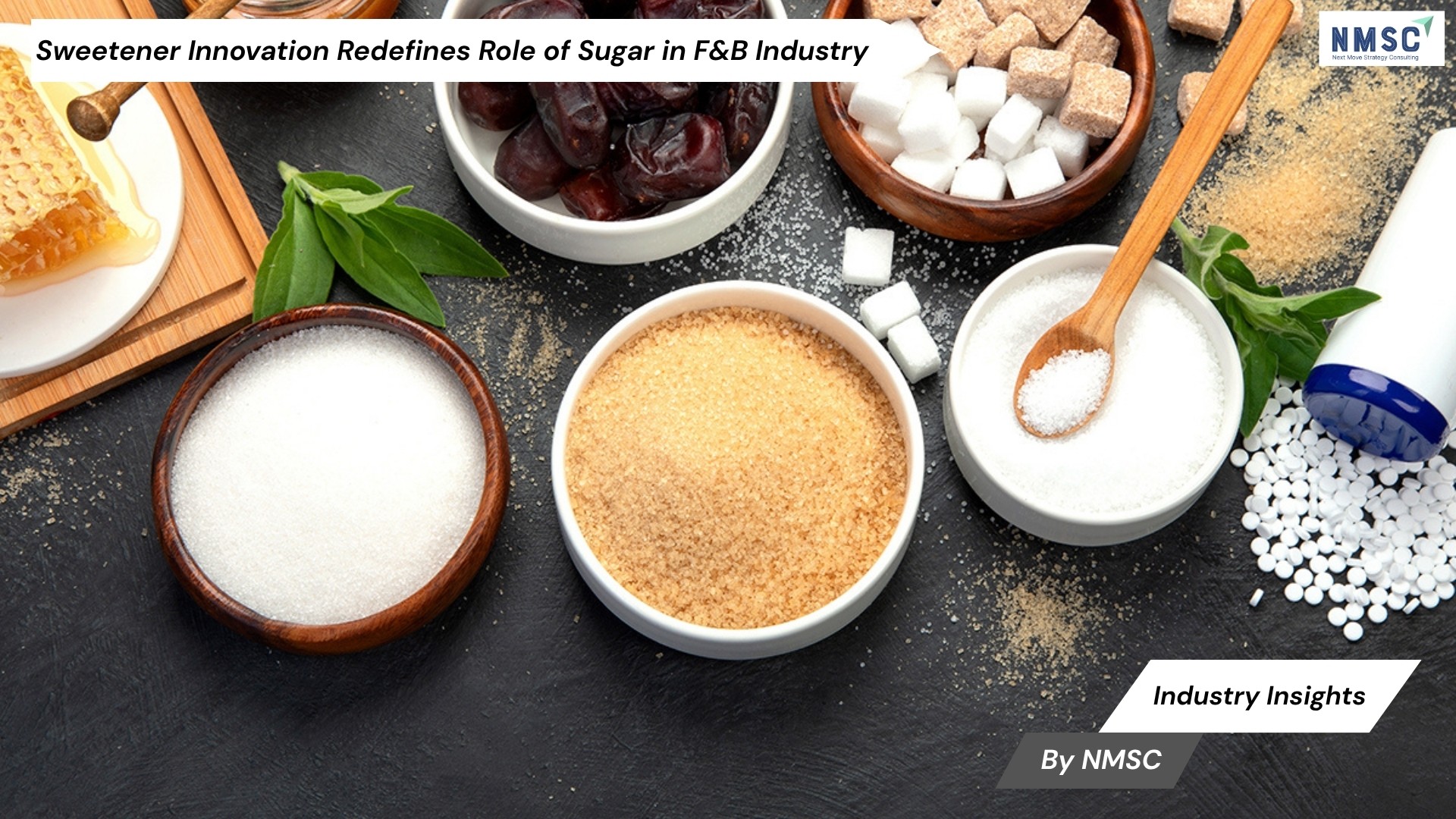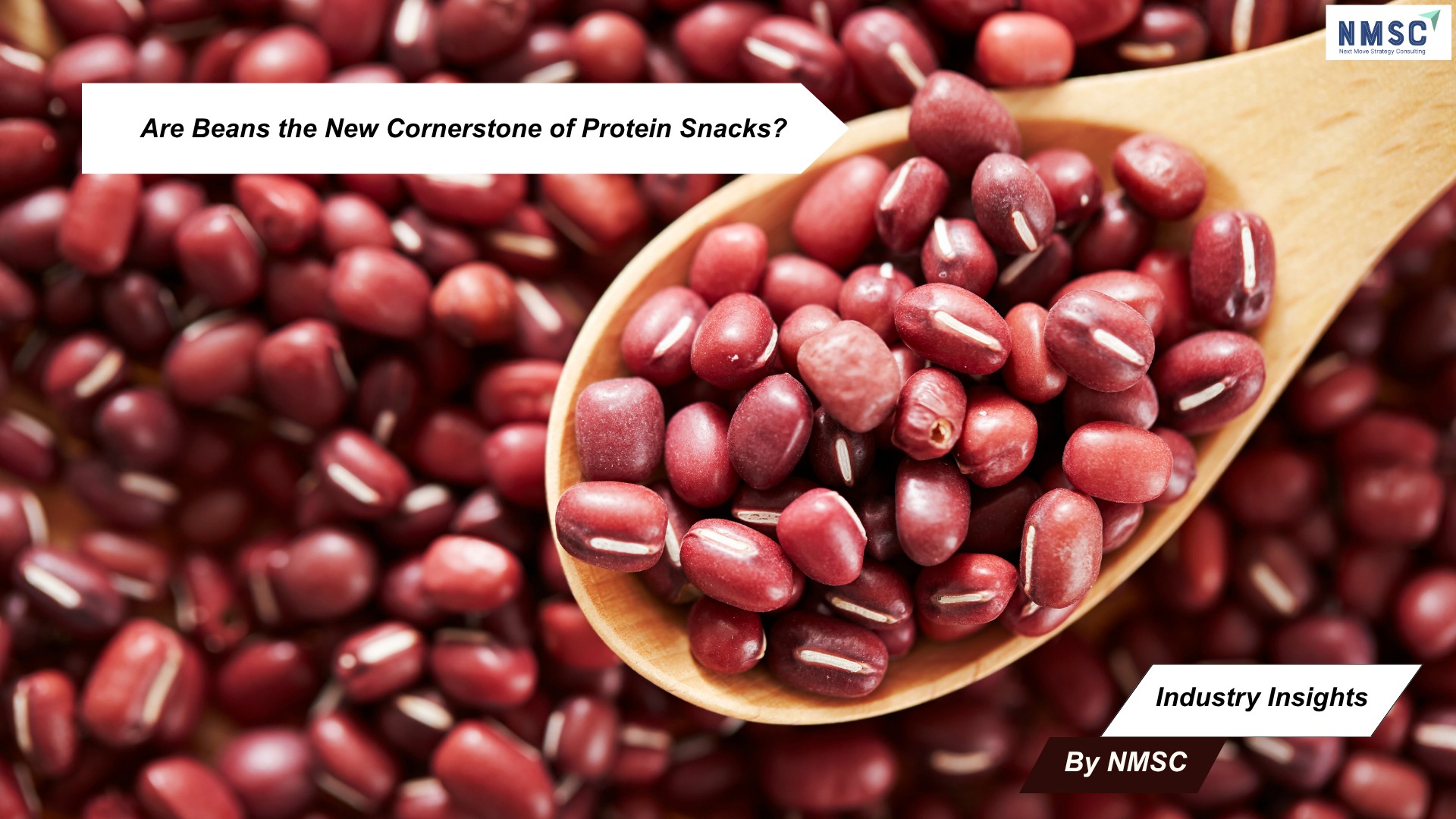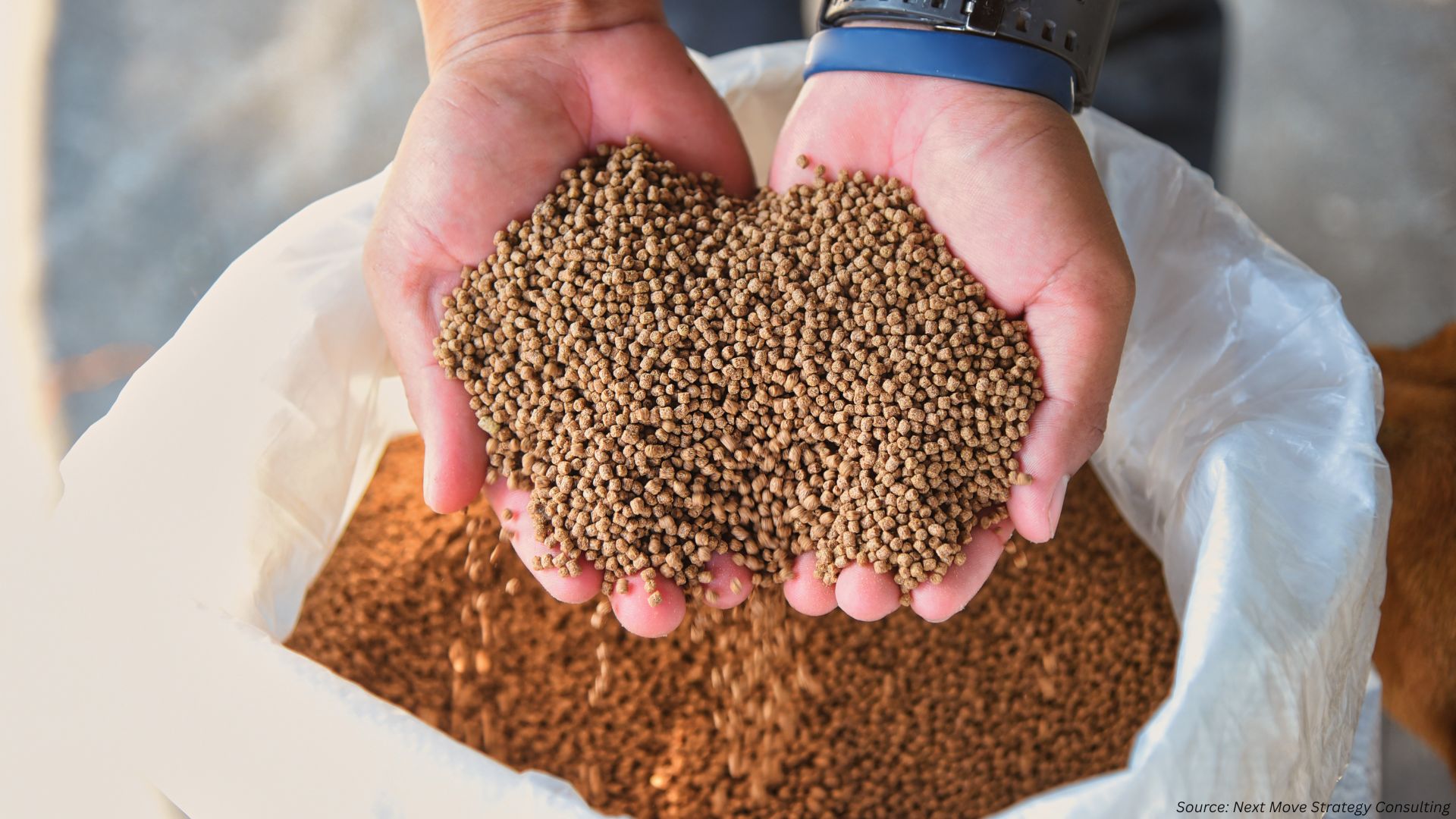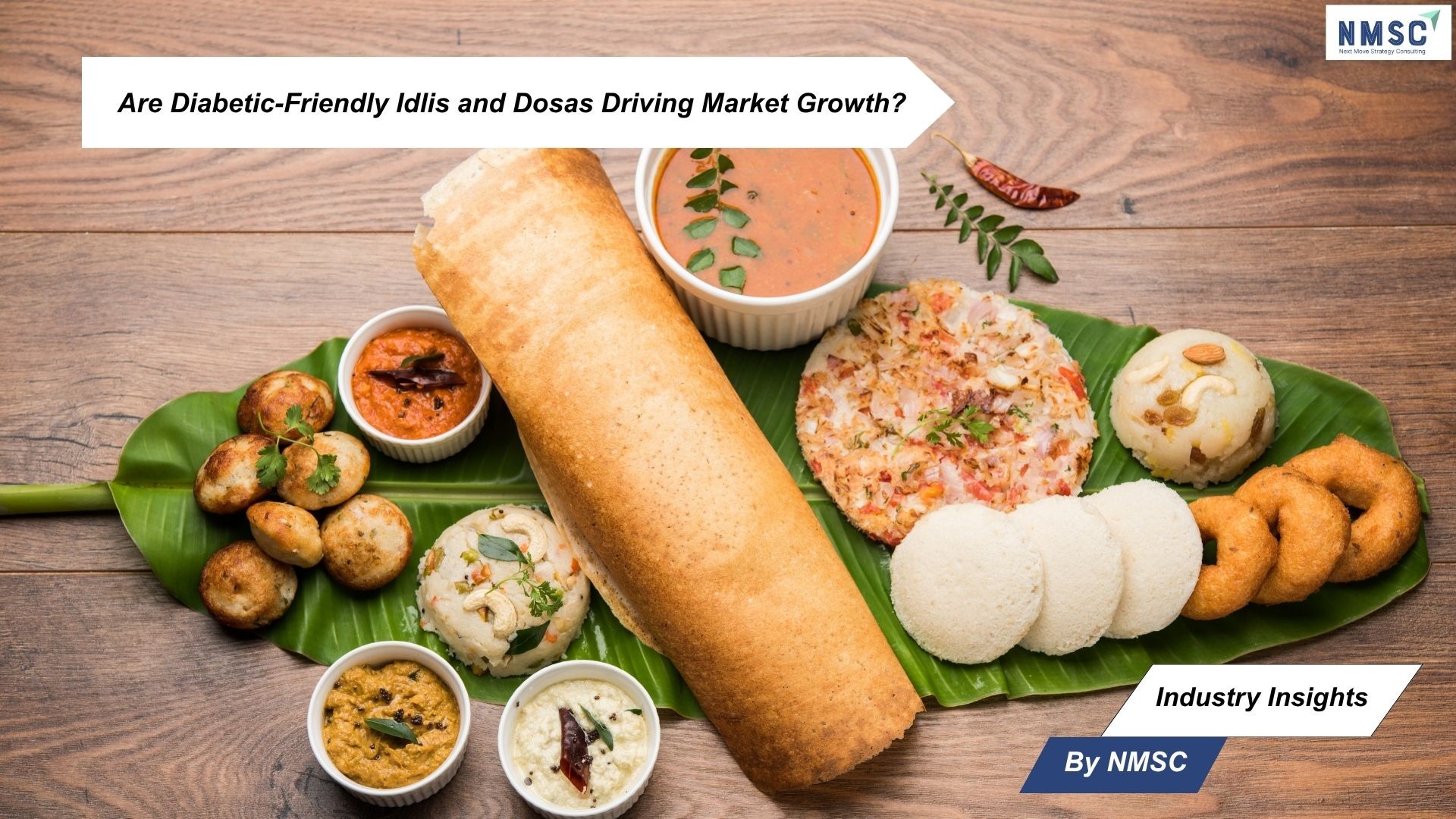Sweetener Innovation Redefines Role of Sugar in F&B Industry
Published: 2025-10-25

Industry Insights from Next Move Strategy Consulting
As food and beverage manufacturers confront evolving consumer demands and regulatory momentum, the role of sweeteners is undergoing a significant transformation. From suppliers re-imagining sugar’s sensory and functional contributions to regulators accelerating precision-fermentation approvals, the landscape of sweetening systems is being reinvented.
Shifting from Sugar Reduction to Function-Driven Sweetening
For years the industry focused heavily on reducing sugar content as a hallmark of “better-for-you” innovation. But ingredient makers are now going further: they are developing sweetener systems that replicate the many roles sugar plays in formulations — sweetness, browning, texture and mouthfeel — while enabling the reduction of total sugar content. Companies such as Kerry Group and NotCo are at the forefront, using technologies like AI and biotech to rethink sugar’s behaviour.
The narrative is shifting: instead of simply removing sugar, the goal is redefining its role through smarter formulation. As one industry forecast from Whole Foods Market suggests, “sweet – but make it mindful” may define the sweet-taste trend of 2026.
Regulatory and Innovation Tailwinds
Regulatory developments are also supporting this momentum. The U.S. Food & Drug Administration (FDA) has issued “no-questions” letters for precision-fermented and bio-identical proteins and sweet-alkaloid ingredients, signalling growing acceptance of genetically and fermentation-derived alternatives. This regulatory openness is giving ingredient manufacturers greater confidence to invest in next-gen sweetener systems.
Implications for Food & Beverage Manufacturers
For brands and manufacturers, the evolving sweetener landscape suggests several actionable take-aways:
-
Formulation complexity will increase: Substitutes must deliver not just sweetness but full sensory performance — texture, colour, browning, and after-taste. Ingredient suppliers are responding accordingly.
-
Consumer acceptance remains paramount: Research indicates that even consumers on GLP-1 treatments still desire sweet taste profiles — so flavour remains critical.
-
Marketing nuance is evolving: It may no longer suffice to say “reduced sugar” — framing will shift toward “smart sweetness”, “next-gen sweet systems” or “taste with performance”.
-
Sustainability and clean-label continue to influence: Ingredient firms are embedding sustainability and clean-label claims into sweetener innovation, meeting demands beyond sweetness alone.
Next Move Strategy Consulting’s Views
The sweetener market is entering a new phase: We expect innovation drivers to move beyond sugar-reduction alone toward multi-functional sweetening systems, integrating sweetness, texture, and sensory equivalence.
Competitive dynamics will intensify: Companies that can deliver sensory integrity, sustainability credentials and regulatory clarity will gain competitive advantage.
Taste will remain the gatekeeper: As consumer research shows, the appetite for sweet flavour is resilient — whether or not users are on appetite-modulating drugs. Thus, innovations that compromise taste will struggle.
Incremental wins will build long-term value: Rather than radical reformulations, modest improvements in sweetening systems that maintain or improve taste and performance while reducing sugar burden may deliver the most sustainable growth.
Global implications: Although much of the commentary is U.S-centric, the formulation logic applies globally. Markets with rising health-conscious consumers are likely to adopt these smarter sweetener systems.
Redefining the Sweetness Frontier
As food and beverage manufacturers navigate tighter nutrition goals, consumer taste demands and regulatory momentum, the landscape of sweeteners is evolving rapidly. Rather than simply treating sugar as a problem nutrient to eliminate, the industry is embracing sweetness as a functional system — one that can be reformulated, optimized and aligned with broader health and sustainability priorities. With this shift, the sweetener arena is not merely adapting — it is redefining its role in formula innovation.
In this context, companies that anticipate the next wave of sweetening systems and position themselves accordingly will be better placed to capture consumer enthusiasm, regulatory alignment and marketplace growth.
Prepared by: Next Move Strategy Consulting
Source: foodnavigator
About the Author
 Tania Dey is a highly experienced Content Writer and a passionate SEO Executive with a specialized focus on digital transformation, technology trends, and industry-focused insights. She has honed her expertise in creating compelling, data-driven content that not only enhances online visibility but also aligns with the ever-evolving demands of modern business landscapes. Her work spans a diverse range of industries, including technology, and digital services, enabling organizations to communicate their vision and value propositions effectively to both niches.
Tania Dey is a highly experienced Content Writer and a passionate SEO Executive with a specialized focus on digital transformation, technology trends, and industry-focused insights. She has honed her expertise in creating compelling, data-driven content that not only enhances online visibility but also aligns with the ever-evolving demands of modern business landscapes. Her work spans a diverse range of industries, including technology, and digital services, enabling organizations to communicate their vision and value propositions effectively to both niches.
About the Reviewer
 Sanyukta Deb is an accomplished Content Writer and Digital Marketing Strategist with extensive expertise in content strategy, SEO, and audience engagement. She specializes in building strong brand visibility through data-driven campaigns and impactful, value-added researched content. With a passion for creativity and innovation, she blends strategic thinking with design and communication to craft meaningful digital experiences. Over the years, she has contributed cross-functional marketing projects, driving measurable impact and audience engagement.
Sanyukta Deb is an accomplished Content Writer and Digital Marketing Strategist with extensive expertise in content strategy, SEO, and audience engagement. She specializes in building strong brand visibility through data-driven campaigns and impactful, value-added researched content. With a passion for creativity and innovation, she blends strategic thinking with design and communication to craft meaningful digital experiences. Over the years, she has contributed cross-functional marketing projects, driving measurable impact and audience engagement.
















Add Comment